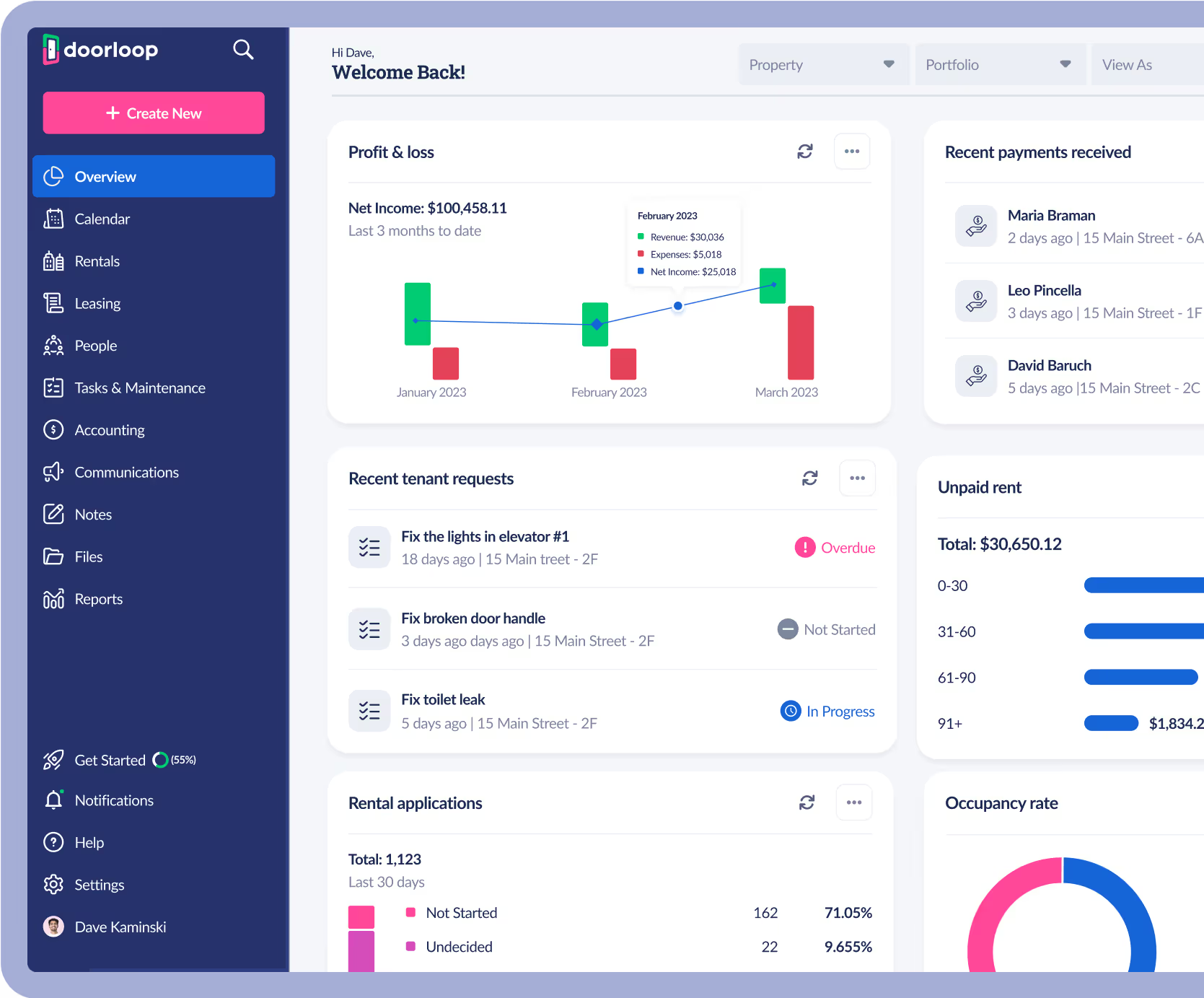The question “is rental income passive income” affects every property investor’s tax strategy and bottom line. Getting this classification wrong can cost you thousands in unnecessary taxes or missed deductions—while understanding it correctly opens doors to significant tax advantages and strategic growth opportunities.
Most rental property owners assume their income automatically qualifies as passive, but the IRS has specific rules that determine whether your rental activities generate passive or active income. The distinction isn’t just academic—it impacts everything from your tax liability to your ability to deduct losses against other income.
Key Takeaways
- Rental income is generally classified as passive income by the IRS, meaning it requires minimal day-to-day involvement
- The classification depends on your level of material participation—spending over 750 hours annually in real estate activities can make it active income
- Passive rental income is taxed at ordinary income rates but is exempt from self employment tax
- Property managers can help maintain passive status by handling daily operations and tenant management
- Understanding the distinction is crucial for tax planning, deduction eligibility, and investment strategy optimization
Understanding Passive vs Active Income Classification
The IRS classifies rental income as passive income by default, but this designation depends entirely on your level of involvement in rental real estate activities. According to IRS Publication 925, passive income refers to earnings from activities where you don’t materially participate in the day-to-day operations.
For rental properties, this typically means you’re not actively involved in tenant selection, rent collection, maintenance coordination, or other operational tasks. Instead, you make high-level investment decisions while others handle the routine management work.
The material participation threshold becomes crucial here. If you cross certain involvement levels—measured by hours spent and types of activities—the IRS classifies rental income as active income, changing your entire tax treatment. This shift affects not only your tax rates but also your ability to offset losses and claim certain deductions.
Your overall tax strategy hinges on this classification because passive and active income follow completely different tax rules. Passive income offers protection from self employment tax but limits your ability to deduct losses against W-2 income. Active income subjects you to additional taxes but provides more flexibility in loss utilization.
When Rental Income Is Considered Passive
Most traditional rental property investments naturally fall into the passive category when you maintain appropriate distance from daily operations. Here’s when the IRS classifies rental income as passive income:
Properties managed by professional property management companies represent the clearest path to passive status. When a property manager handles tenant screening, rent collection, maintenance requests, and lease enforcement, your involvement stays at the strategic level. You make decisions about rental rates, major improvements, and property acquisition or disposition, but you’re not materially participating in operations.
Long-term rental agreements requiring minimal landlord involvement also support passive classification. Annual or multi-year leases with stable tenants reduce the ongoing management demands that could push you into active participation territory. The less frequently you need to handle tenant turnover, repairs, or rent adjustments, the easier it becomes to maintain passive status.
Investment properties where you own less than 10% or don’t make management decisions automatically qualify as passive under IRS guidelines. This includes real estate investments through REITs, limited partnerships, or syndications where you’re purely a capital provider without operational control.
Rental activities through passive structures like REITs or similar pooled investments ensure passive treatment since you cannot exercise operational control even if you wanted to. These investment vehicles are designed to provide passive income to investors while professional management teams handle all active responsibilities.
The key factor across all these scenarios is limiting your substantial involvement to strategic decisions rather than operational tasks. The moment you start handling day-to-day tenant issues, coordinating repairs, or managing the rental activity as if it were your primary occupation, you risk crossing into active income territory.
Exceptions: When Rental Income Becomes Active
Several circumstances can transform your passive rental income into active income, fundamentally changing your tax treatment and obligations. Understanding these exceptions helps you make informed decisions about your level of involvement.
Real Estate Professional Status represents the most significant exception. If you spend more than 750 hours annually in real property trades or businesses, and these activities constitute more than half your total working time, you may qualify as a real estate professional. This status converts otherwise passive rental income into active income, allowing you to deduct rental losses against other income sources without passive activity limitations.
Short-term rentals requiring daily management and customer service typically generate active income rather than passive rental income. Properties rented through Airbnb, VRBO, or similar platforms—especially those with average stays under seven days—often require substantial personal services like daily cleaning, guest communication, and hospitality management. The IRS treats this as an active business, subjecting the income to self employment tax and requiring Schedule C reporting instead of Schedule E.
Operating hospitality businesses with significant services always produces active income. Bed-and-breakfasts, extended-stay properties with daily housekeeping, or rentals where you provide meals, linens, or other substantial personal services cross the line into active business operations.
The Seven Material Participation Tests
The IRS uses seven specific tests to determine material participation. Meeting any one test qualifies your rental activity as active rather than passive:
- Participating more than 500 hours during the tax year in the rental activity
- Your participation constitutes substantially all participation in the activity for the year
- Participating more than 100 hours with no other individual participating more than you
- Significant participation activities totaling over 500 hours annually across multiple rental properties
- Material participation in the activity for any five of the preceding ten years
- Material participation for any three preceding years in personal service activities related to real estate
- Participating on a regular, continuous, and substantial basis during the year (typically over 100 hours)
These tests require careful documentation of your time and activities. If you’re actively involved in tenant screening, showing properties, coordinating repairs, or handling emergency calls, you could easily cross the material participation threshold and lose passive status.
Tax Implications of Passive Rental Income
Understanding how passive rental income affects your tax situation helps you optimize your investment strategy and maximize after-tax returns. The tax treatment differs significantly from active business income in several important ways.
Taxation occurs at ordinary income rates based on your marginal tax bracket, currently ranging from 10% to 37% for 2024. However, passive rental income enjoys a crucial advantage: exemption from self employment tax. This saves you approximately 15.3% compared to active business income, representing substantial savings on significant rental income.
Passive activity loss limitations restrict your ability to deduct rental losses against other income sources. Passive losses can only offset passive income—you generally cannot use rental property losses to reduce your W-2 income from employment unless you meet specific exceptions for active participation or real estate professional status.
Carrying forward unused losses provides future tax benefits when you cannot immediately use them. Any disallowed passive losses carry forward indefinitely until you generate sufficient passive income to absorb them or sell the property that generated the losses.
Depreciation recapture implications affect your tax liability when selling rental properties. The depreciation you claimed over the years gets recaptured and taxed at up to 25%, separate from any capital gains tax on the property’s appreciation.
Available Tax Deductions for Passive Rental Income
Passive rental income offers numerous deductible expenses that reduce your taxable income:
- Primary deductions include mortgage interest payments, property taxes, insurance premiums, and property management fees. These typically represent your largest expense categories and provide substantial tax benefits.
- Operational expenses cover repairs, maintenance, advertising, legal fees, accounting costs, and utility expenses you pay as the landlord. Professional property management services, including software solutions like DoorLoop, qualify as deductible business expenses.
- Depreciation deduction allows you to recover the cost of residential rental properties over 27.5 years, providing annual tax benefits even when the property appreciates in current market value. This non-cash deduction can significantly reduce your annual rental income for tax purposes.
- Travel expenses related to property management activities are deductible when properly documented, including trips to inspect properties, meet with contractors, or handle rental business.
- All these deductions get reported on Schedule E of your tax return, which serves as the primary form for calculating net rental income or loss from passive activities.
Strategies to Maintain Passive Status
Maintaining passive classification requires deliberate operational choices that limit your material participation while optimizing your rental property performance. These strategies help you generate passive income while staying compliant with tax regulations.
Hiring professional property management companies represents the most straightforward approach to maintaining passive status. Full-service property managers handle tenant screening, rent collection, maintenance coordination, and lease enforcement—keeping you removed from daily operations that could trigger active classification.
Implementing automated systems reduces the need for your direct involvement in routine tasks. Modern property management software platforms automate rent collection, tenant communications, maintenance requests, and lease renewals. Tools like DoorLoop help property owners maintain passive status by streamlining operations without requiring hands-on management.
Outsourcing maintenance and repairs to contractors and service providers prevents you from materially participating through direct labor. Rather than fixing issues yourself, establish relationships with reliable contractors who handle all property maintenance needs.
Limiting decision-making to major financial and strategic matters keeps you in the passive category. Focus your involvement on setting rental rates, approving major improvements, making acquisition decisions, and other high-level investment choices rather than operational details.
Documenting limited participation protects your passive status during potential IRS scrutiny. Maintain detailed records showing your restricted involvement and the delegation of operational responsibilities to property managers or other service providers.
Benefits of Passive Rental Income Classification
Passive income classification offers compelling advantages that make it attractive for many real estate investors, particularly those building wealth while maintaining other careers or business interests.
Reduced time commitment allows you to focus energy on other investments, your primary occupation, or personal priorities. Passive income streams don’t require full-time attention, enabling you to scale your real estate portfolio without proportionally increasing your time investment.
Self employment tax exemption provides immediate tax savings of approximately 15.3% compared to active business income. For investors with substantial annual rental income, this exemption represents thousands of dollars in annual tax savings.
Qualified Business Income Deduction eligibility under Section 199A may reduce your taxable income by up to 20% for qualifying rental activities. This deduction effectively lowers your marginal tax rate on rental income, though complex rules determine eligibility.
Simplified tax reporting through Schedule E streamlines your annual tax preparation compared to active business operations requiring Schedule C filing with associated employment tax complications.
Portfolio scalability becomes much easier when maintaining passive structures. You can add investment properties across multiple markets without dramatically increasing your time commitment, particularly when using professional property management and automated systems.
The combination of tax benefits and operational efficiency makes passive rental income particularly attractive for building steady cash flow and long-term wealth accumulation.
Reporting Passive Rental Income on Tax Returns
Proper reporting ensures compliance while maximizing your available tax benefits. Understanding the reporting process helps you maintain accurate records and avoid common mistakes that could trigger IRS attention.
Schedule E (Form 1040) serves as the primary reporting vehicle for rental income and expenses from passive activities. This form requires detailed breakdowns of gross rents received, allowable deductions, and net rental income or loss for each property.
Calculating gross rental income includes all payments received from tenants: monthly rent, late fees, pet deposits, application fees, and any other charges related to the rental arrangement. Security deposits held for potential damages aren’t income until actually used for repairs or retained due to lease violations.
Deducting allowable expenses reduces your taxable income through legitimate business costs. Common deductible expenses include mortgage interest, property taxes, insurance, property management fees, repairs, maintenance, advertising, legal fees, and depreciation.
Applying passive activity loss limitations occurs when your rental expenses exceed rental income. These losses generally cannot offset W-2 income or other active income sources, though specific exceptions exist for qualifying taxpayers with modified adjusted gross income under certain thresholds.
Maintaining detailed records supports all income and expense claims during potential audits. Document all rental receipts, expense payments, contractor invoices, property management agreements, and time logs showing your limited participation in daily operations.
Common Mistakes to Avoid
Several frequent errors can jeopardize your passive income classification or result in missed tax benefits. Avoiding these mistakes protects your investment strategy and ensures optimal tax treatment.
- Assuming automatic passive classification without considering your actual involvement level creates compliance risks. The IRS examines your total participation across all rental properties, and excessive involvement can trigger active income reclassification even if you prefer passive treatment.
- Failing to track time spent on rental activities makes it impossible to defend your classification during an audit. Maintain contemporaneous logs of hours spent on property-related tasks, particularly if you’re involved in tenant communications, maintenance coordination, or other operational activities.
- Misunderstanding property management impact on classification leads to incorrect assumptions. While hiring a property manager supports passive status, your own extensive involvement can override this protection. The total participation test includes both your activities and those of any hired managers.
- Overlooking annual material participation testing as your portfolio grows can result in unintended classification changes. Each tax year requires fresh evaluation of your involvement level, especially when adding properties or changing operational approaches.
- Inadequate record-keeping undermines your ability to support passive classification or claim legitimate deductions. The IRS expects detailed documentation of income, expenses, and participation levels—particularly for taxpayers claiming passive treatment while maintaining some operational involvement.
Understanding whether rental income qualifies as passive income shapes every aspect of your real estate investment strategy. The classification affects your tax liability, deduction eligibility, reporting requirements, and growth potential. While most rental property income defaults to passive status, maintaining that classification requires strategic operational choices and careful documentation.
The key lies in balancing your desired level of involvement with the tax benefits of passive classification. For many investors, the combination of self employment tax savings, simplified reporting, and scalability makes passive status highly attractive. Modern property management solutions like DoorLoop help maintain this status by automating routine tasks and reducing the need for hands-on involvement while optimizing property performance.
Whether you’re managing your first investment property or scaling a substantial portfolio, understanding these classification rules enables informed decisions about operational structure, tax planning, and long-term investment strategy. Consider consulting with a tax advisor or financial advisor to ensure your approach aligns with your specific tax situation and financial goals.
Ready to streamline your rental operations while maintaining passive income status? Discover how DoorLoop’s comprehensive property management platform can automate your rental processes, reduce your hands-on involvement, and help you scale your portfolio efficiently. Book a demo today to see how modern property management technology supports your passive income strategy.
Frequently Asked Questions
Is rental income from a single property always passive income?
Not necessarily. Even income from a single rental property can become active if you materially participate in its management. The number of properties doesn’t determine classification—your level of involvement does.
Can I switch between passive and active classification for the same property?
Yes, but only based on changes in your actual participation level. If your involvement increases to meet material participation tests, the income becomes active. If you reduce participation below those thresholds, it can return to passive status.
How does hiring a property manager affect my income classification?
Hiring a property manager supports passive classification by reducing your direct involvement, but it doesn’t guarantee passive status. If you remain actively involved in operations despite having a manager, you could still meet material participation tests.
What happens if I exceed 750 hours of real estate activity annually?
You may qualify as a real estate professional, which can convert passive rental income to active income. This status allows you to deduct rental losses against other income but requires meeting strict IRS criteria including spending more than half your working time in real property trades.
Can passive rental losses offset my W-2 income from employment?
Generally no, passive losses can only offset other passive income. However, taxpayers with modified adjusted gross income under $100,000 may deduct up to $25,000 in rental losses against other income if they actively participate (but don’t materially participate) in rental activities.
































.svg)
.svg)

